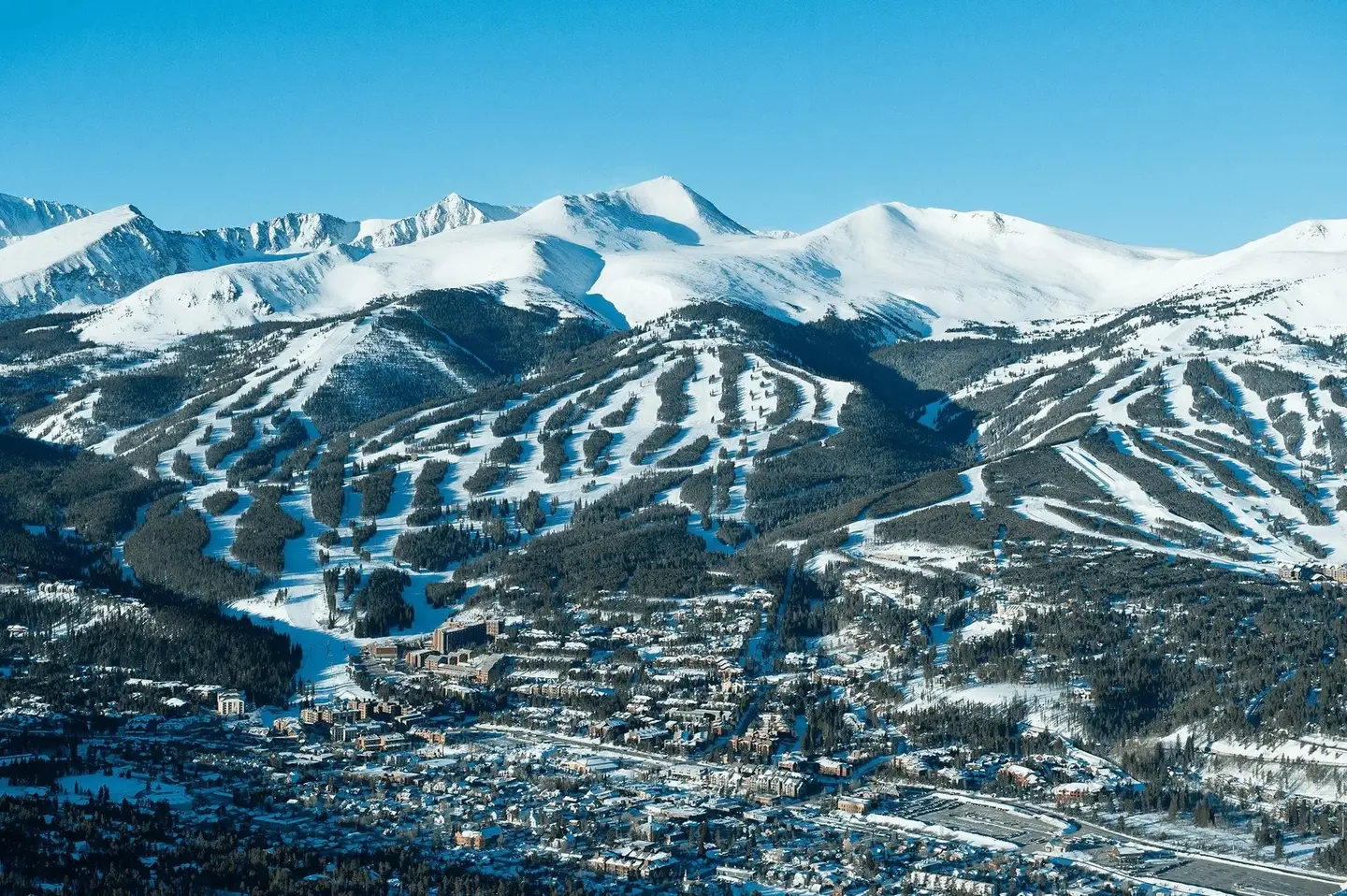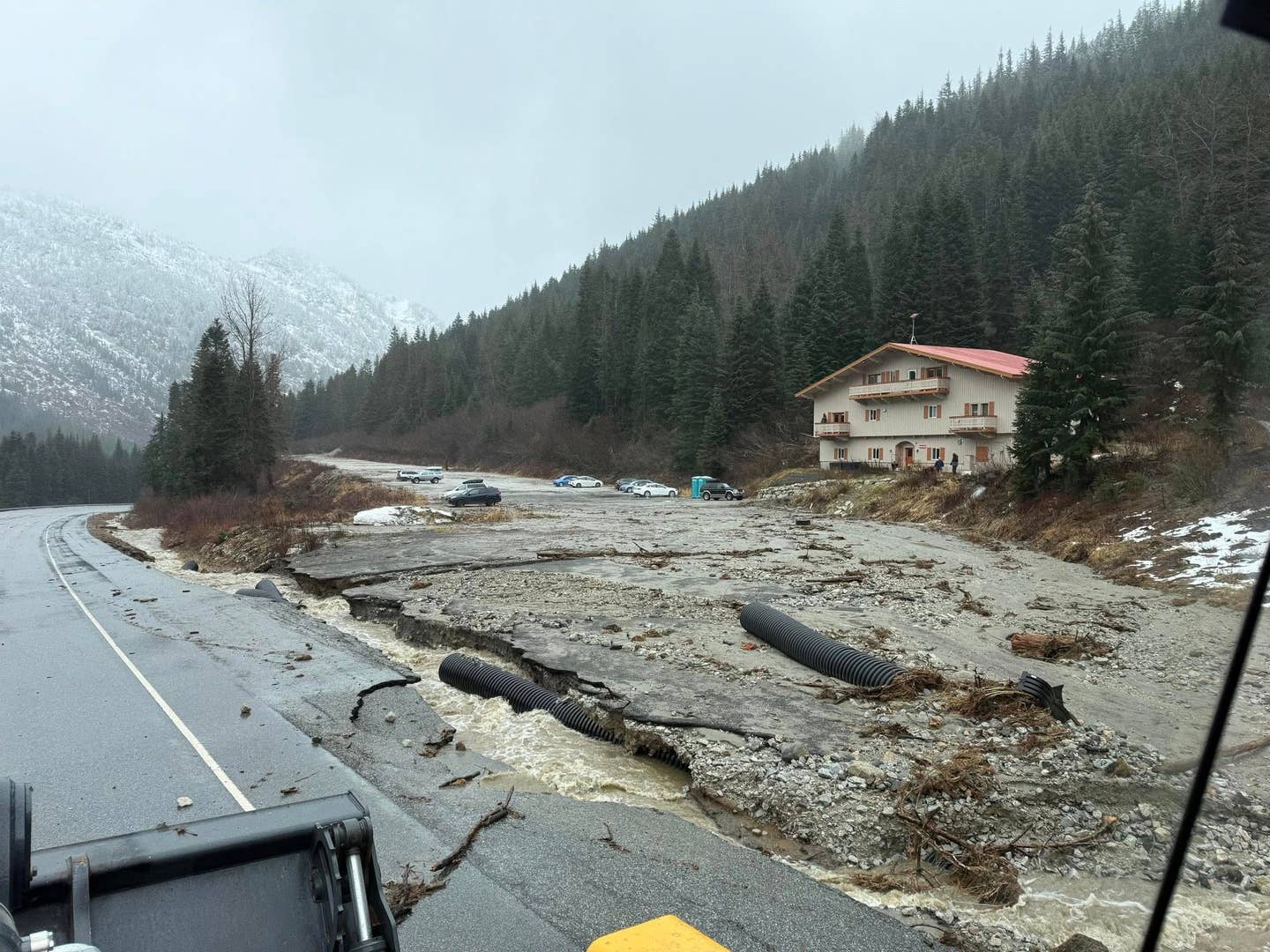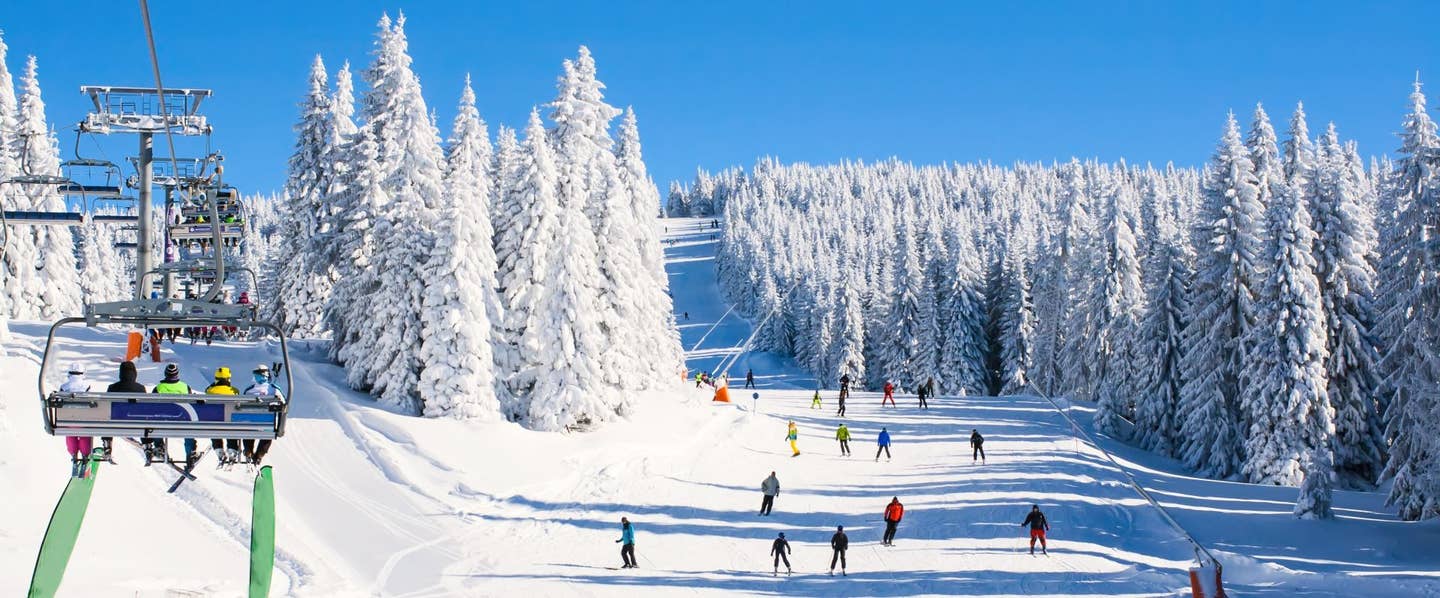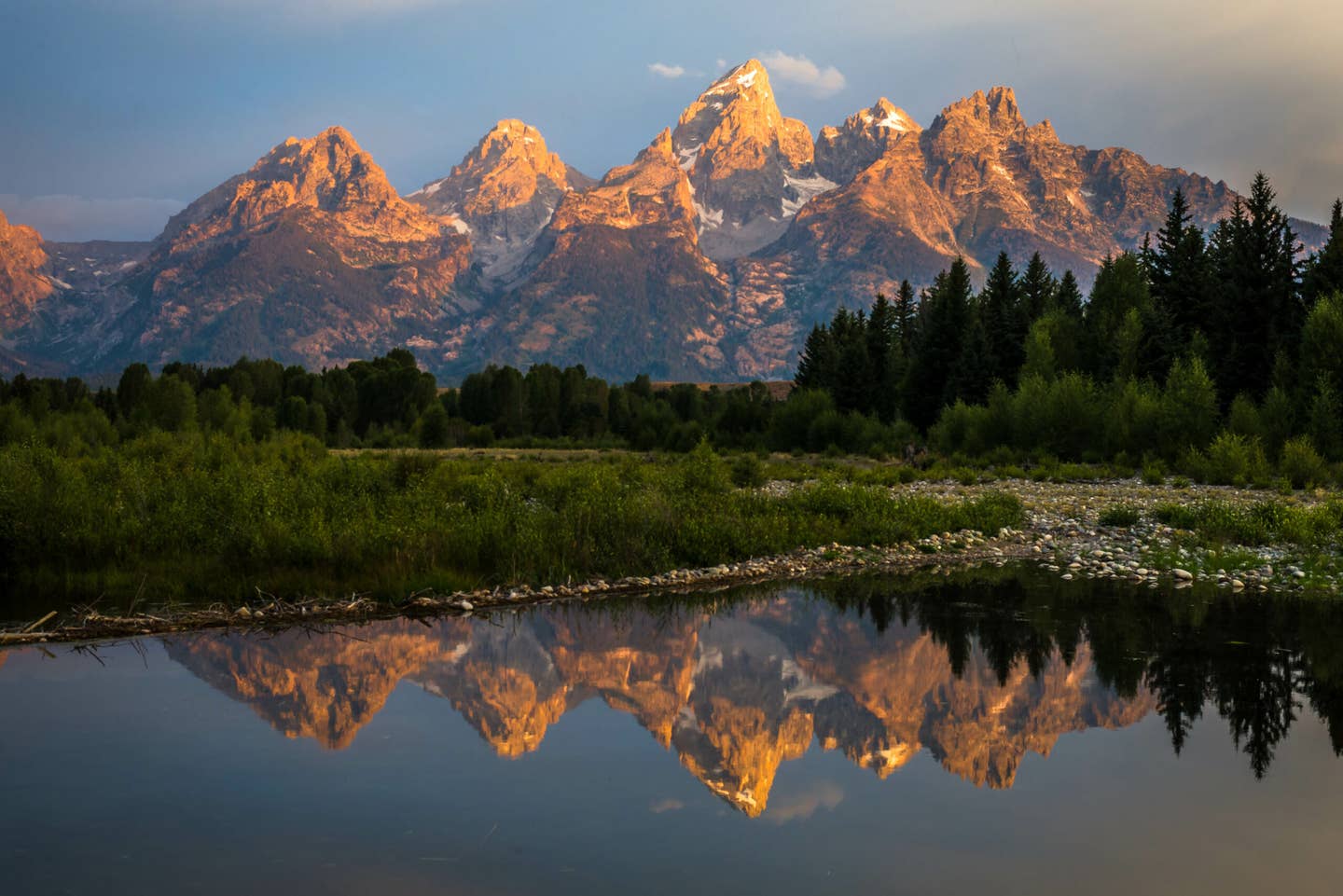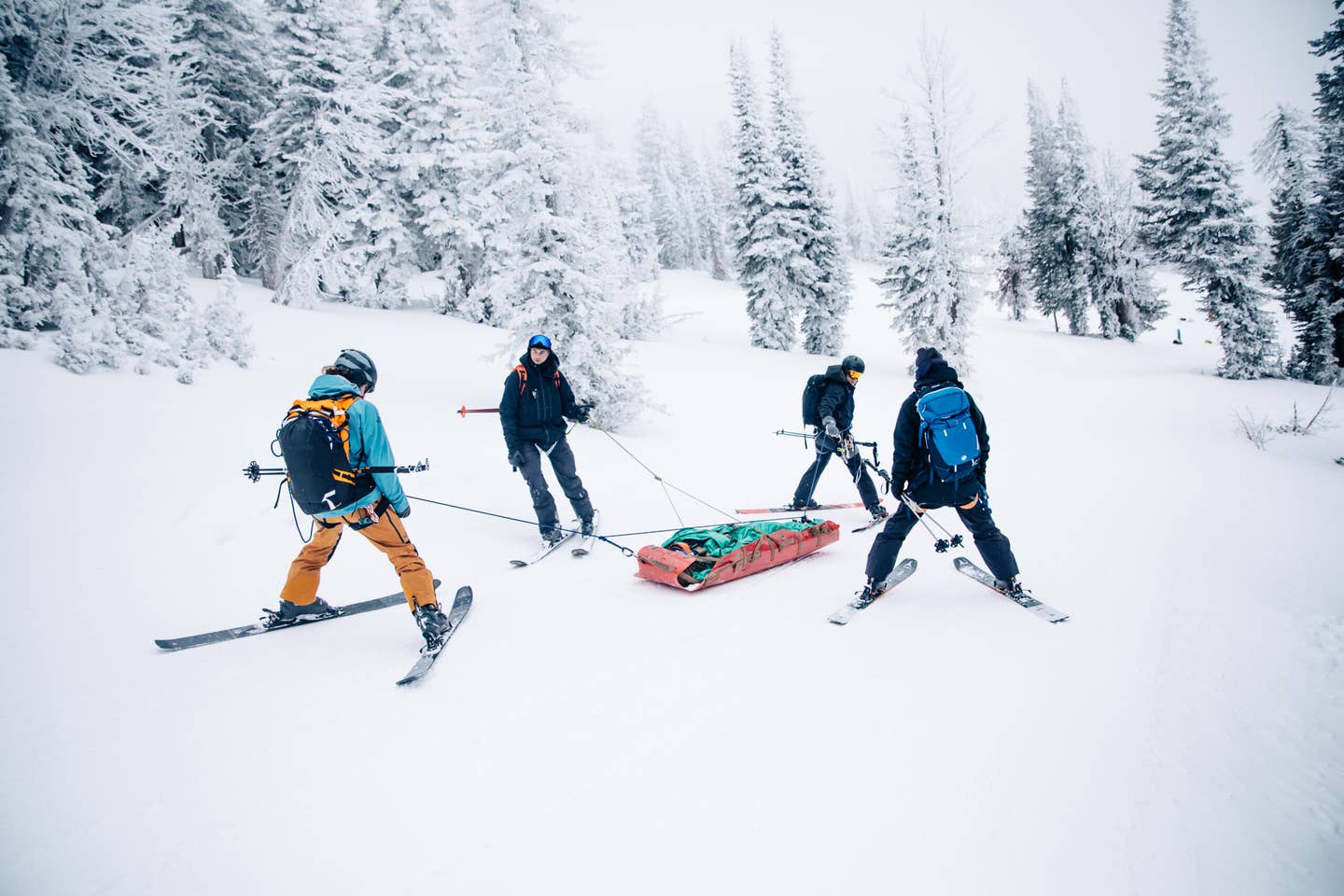

What’s a Med Sled and How Do We Use It?
Popular Stories
 Moving an injured partner out of the backcountry is never easy, but using a Med Sled can make the ordeal a whole lot more manageable. | Katie Lozancich photo.
Moving an injured partner out of the backcountry is never easy, but using a Med Sled can make the ordeal a whole lot more manageable. | Katie Lozancich photo.
What do you do when you encounter the worst-case scenario of having to transport an injured partner out of the backcountry after an accident? Picture being way out in the high alpine on snowmobiles or with a helicopter when an athlete takes a fall and suffers an injury that leaves them unable to move to safety. As a first responder, your first priority is to address their immediate medical needs, but the larger objective becomes to move them to a safe place where they can be transported out of the backcountry to a hospital for care.
It’s already difficult enough to move through complex terrain in the snow on your own, but what if you also have to move your buddy to a trailhead or helicopter landing zone under your own power? At this year’s International Pro Rider Workshop (IPRW) our athletes and production crew practiced this exact scenario using a tool called the Med Sled® Vertical Lift Rescue (VLR). The VLR is a lightweight but extremely durable evacuation litter designed to be used by military, SAR and backcountry medical professionals to move patients across rugged terrain quickly.
 Kai Jones and members of the production crew practice packaging a patient into a Med Sled. | Izzy Lidsky photo.
Kai Jones and members of the production crew practice packaging a patient into a Med Sled. | Izzy Lidsky photo.
Used by professionals all around the world, the Med Sled VLR is an easy-to-use tool for a very specific purpose. While it certainly is not a tool to carry on foot-powered missions due to its size and weight, it can reasonably be brought along on mechanized missions for an extra margin of safety. The packed system weighs around 17 pounds and fits into a carry bag the size of large daypack.
Sign Up for the TGR Gravity Check Newsletter Now
 The Med Sled is designed to be able to lift and lower a patient through complex terrain like that found in the mountains. | Izzy Lidsky photo.
The Med Sled is designed to be able to lift and lower a patient through complex terrain like that found in the mountains. | Izzy Lidsky photo.
At IPRW, our crews learned how to package a patient, including how to roll them onto the sled to avoid having to lift them. Once properly packaged, we practiced moving the system through complex terrain, like steep trees, over cliffs, and through simulated crevasse terrain. The Med Sled VLR system proved invaluable in being able to efficiently move a patient while also keeping the rescuers workload and safety within a manageable margin.
